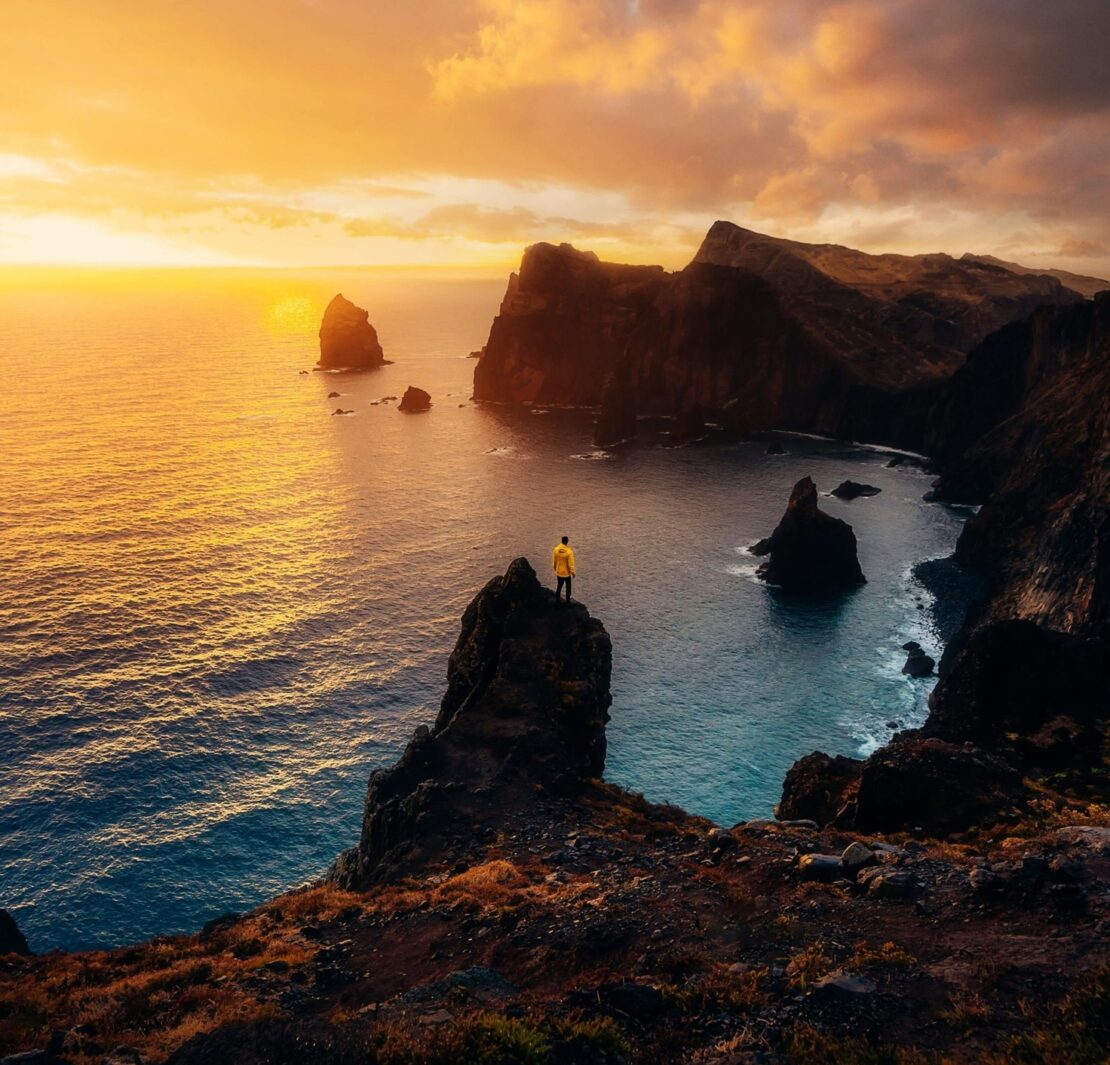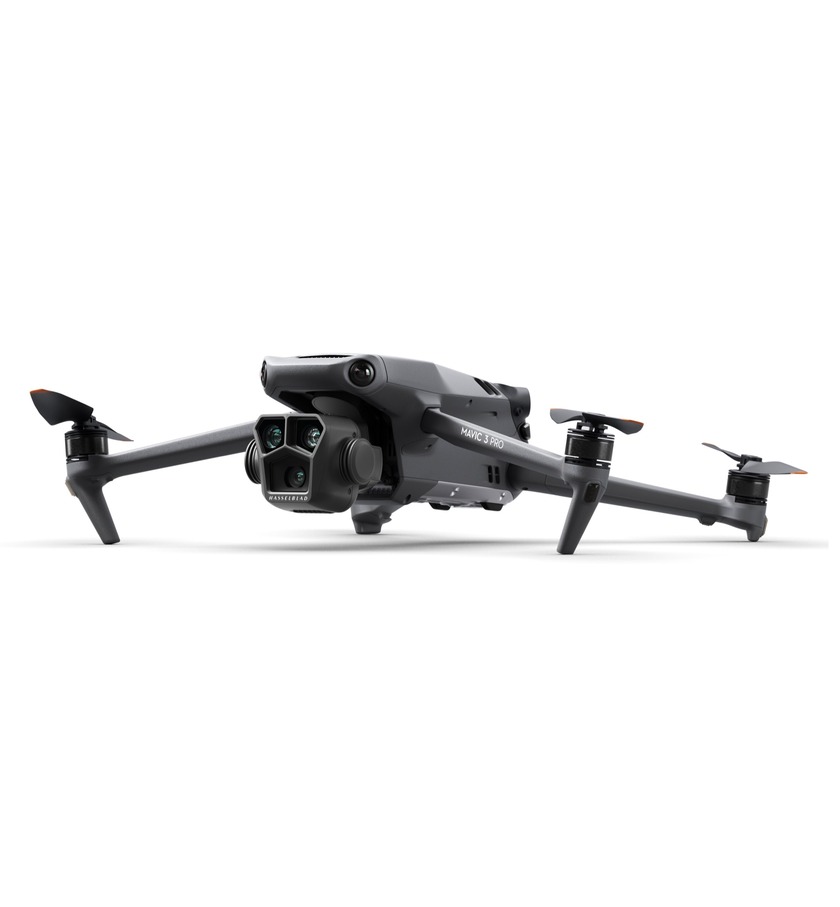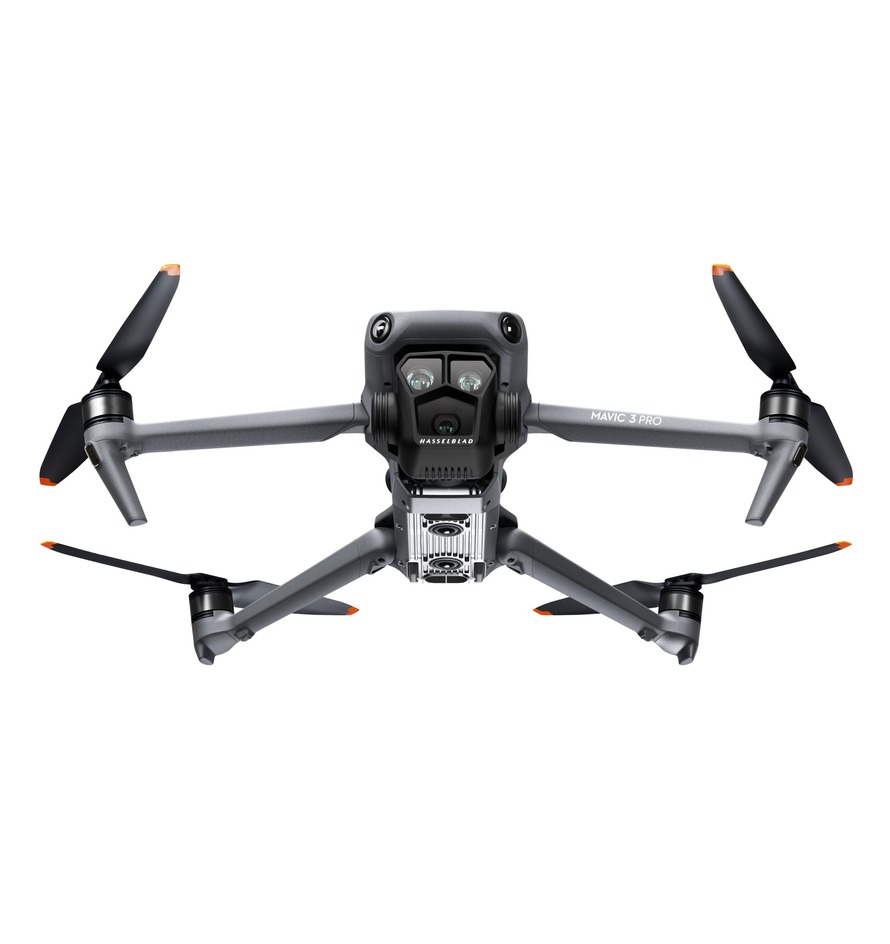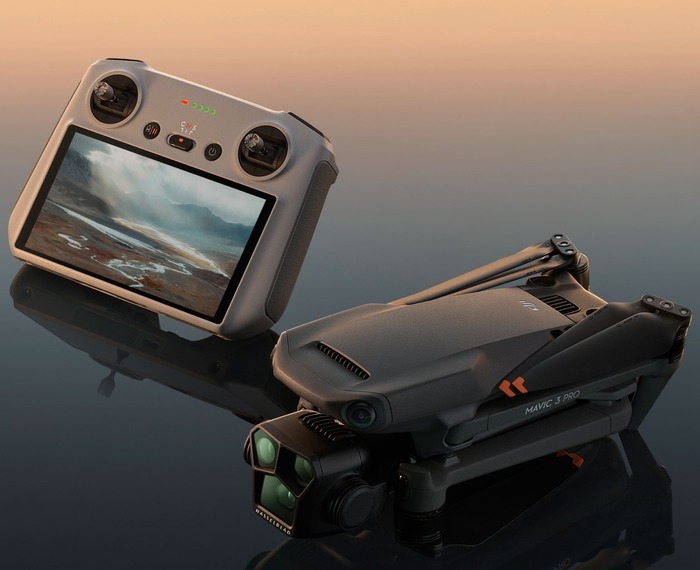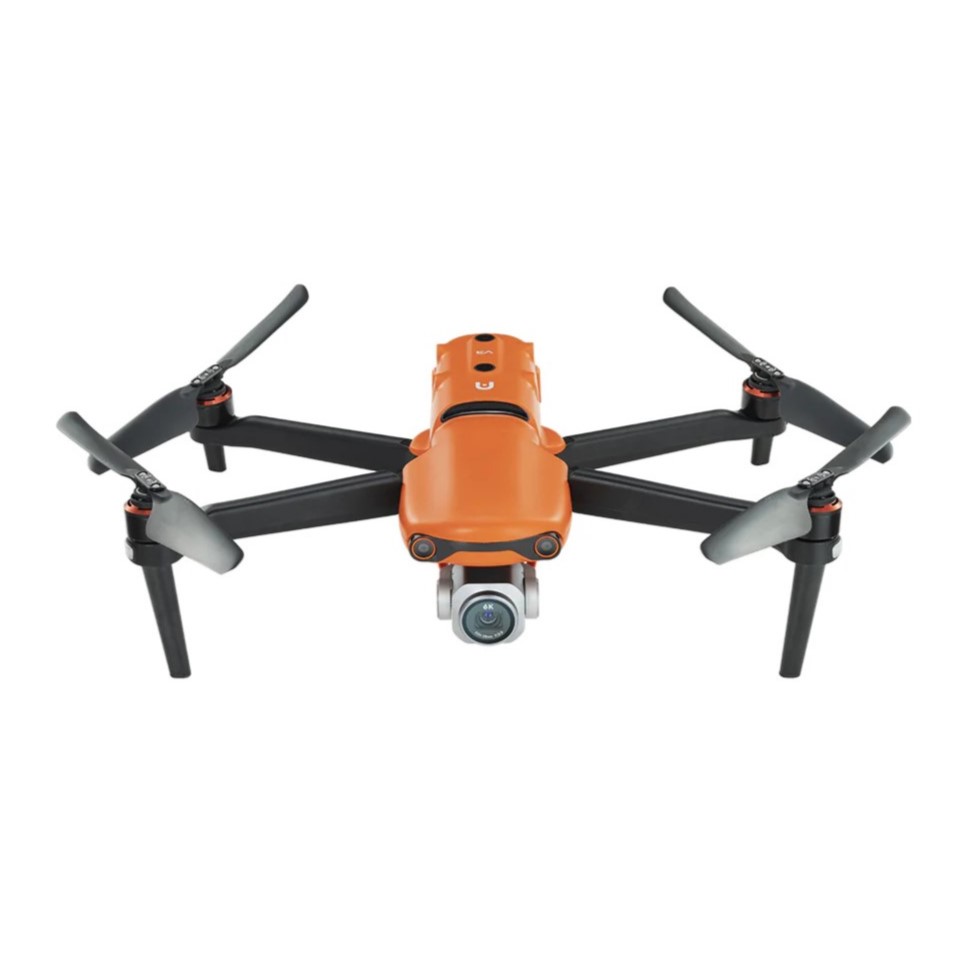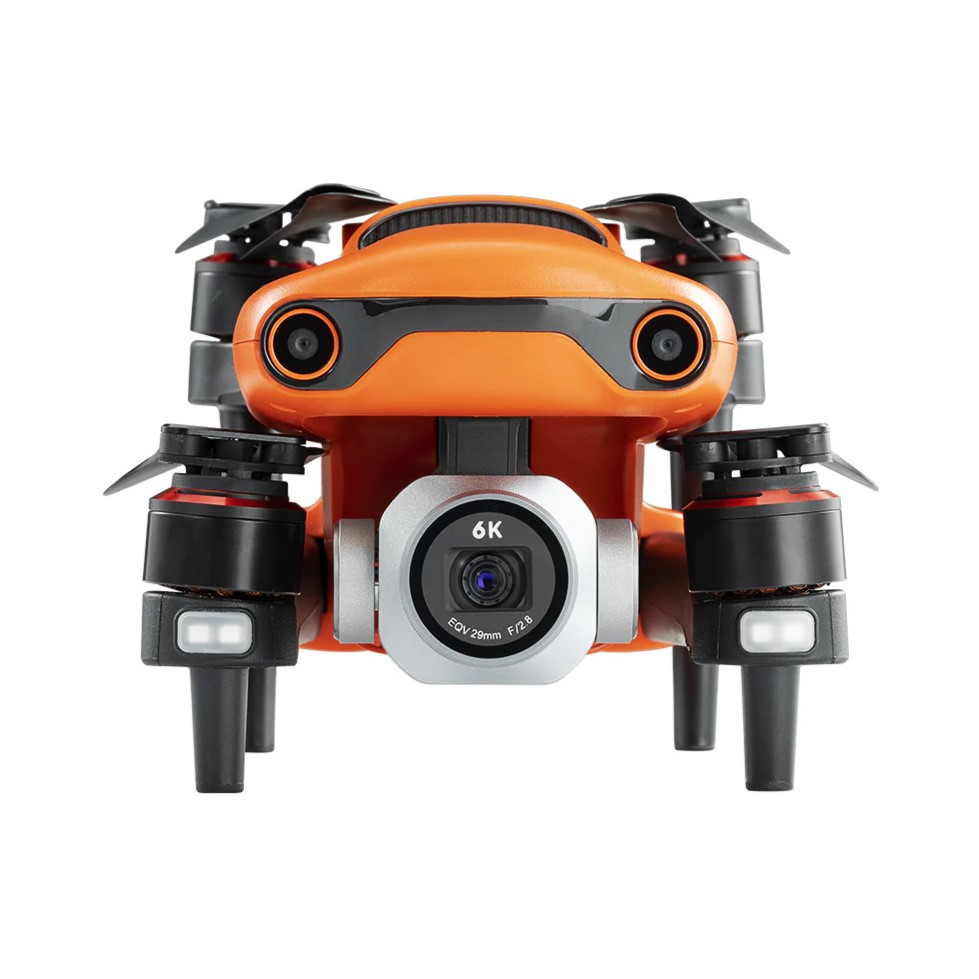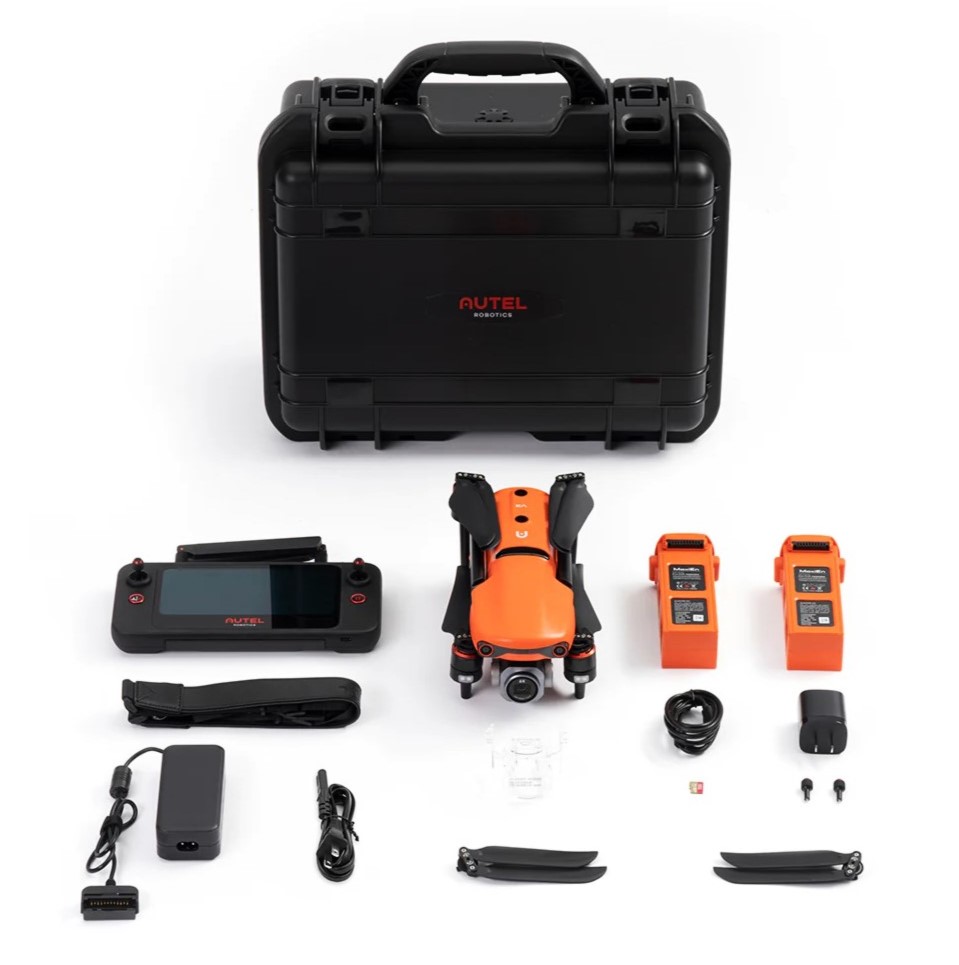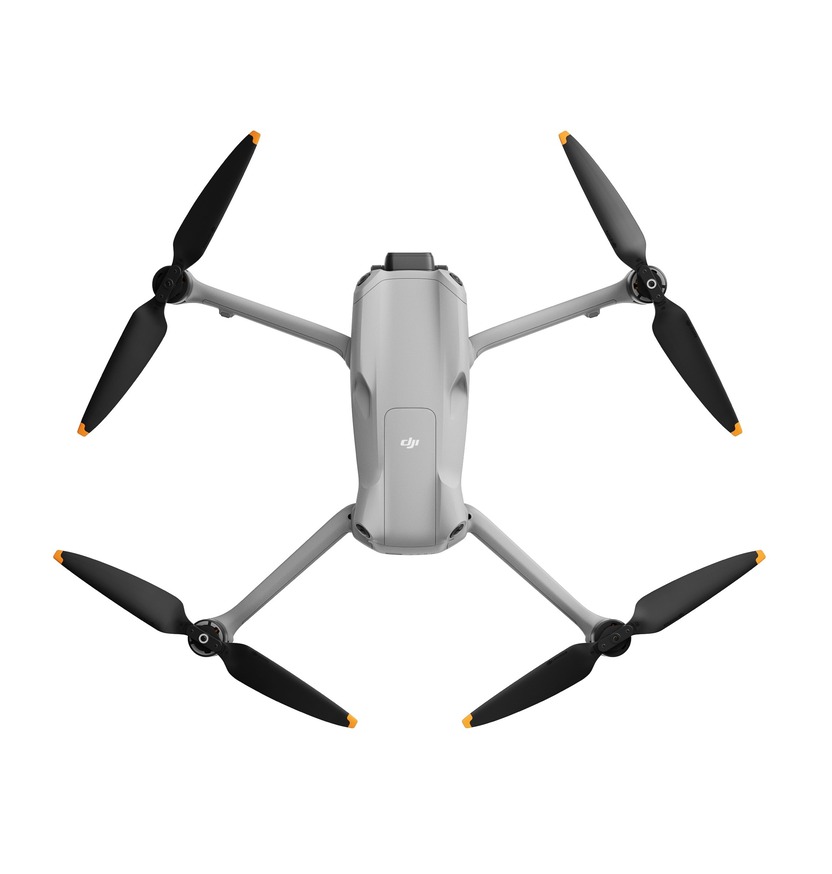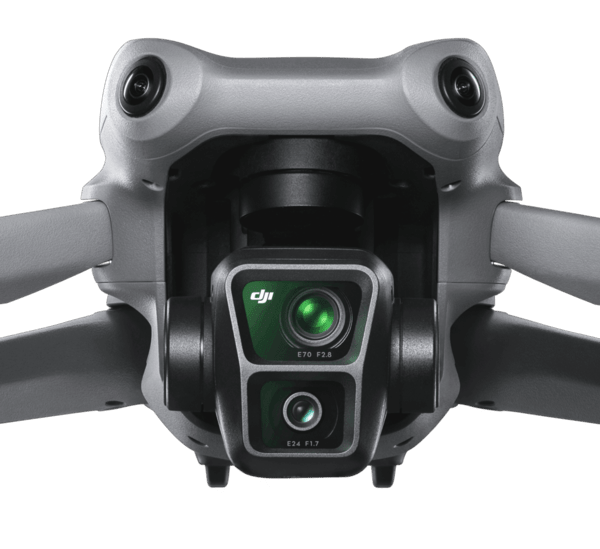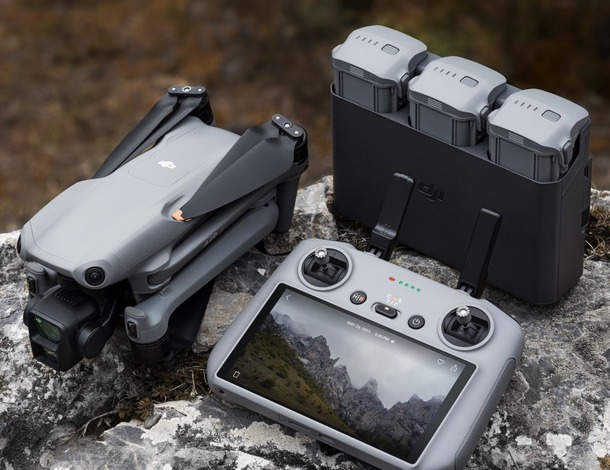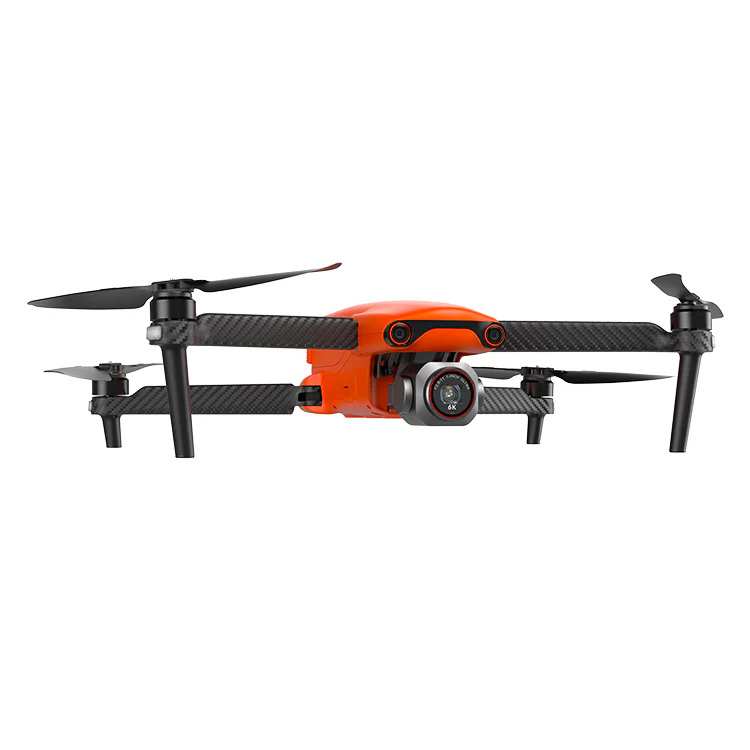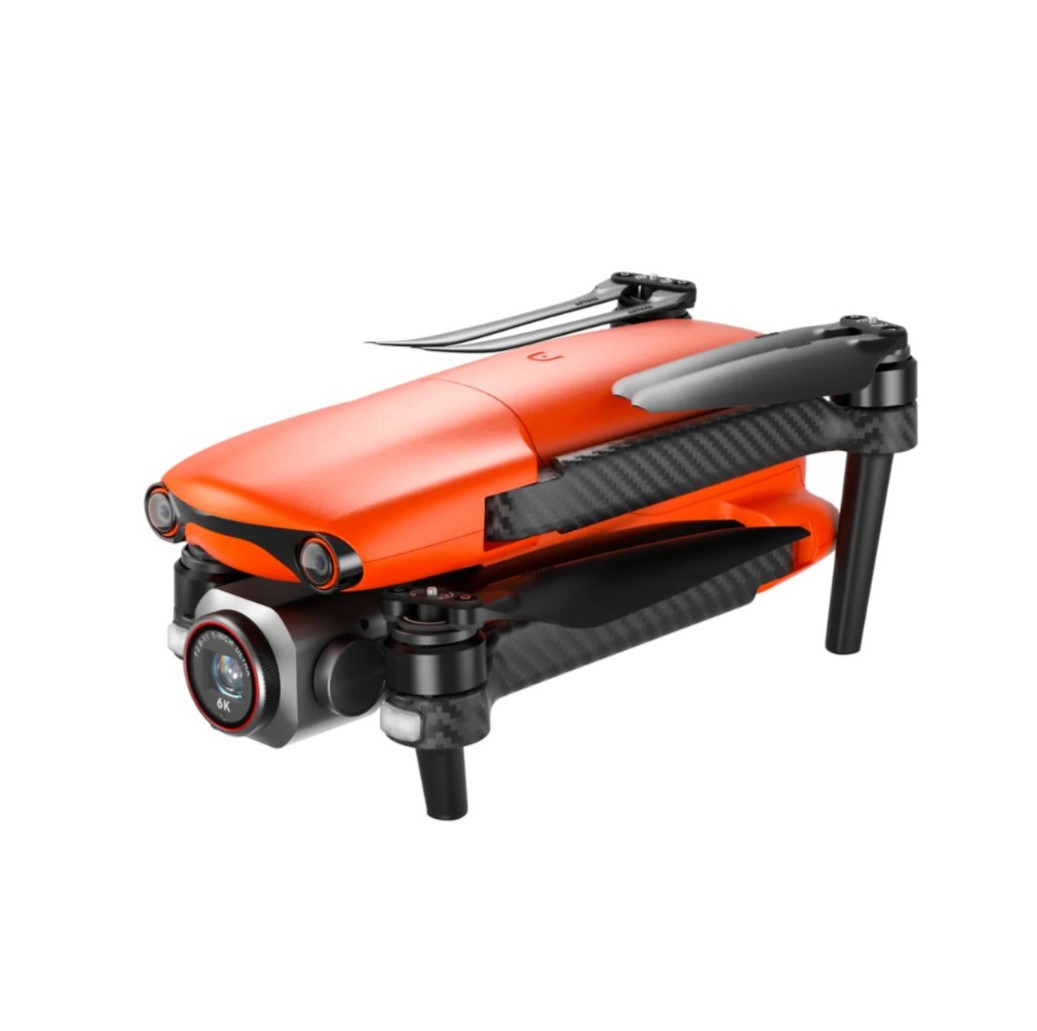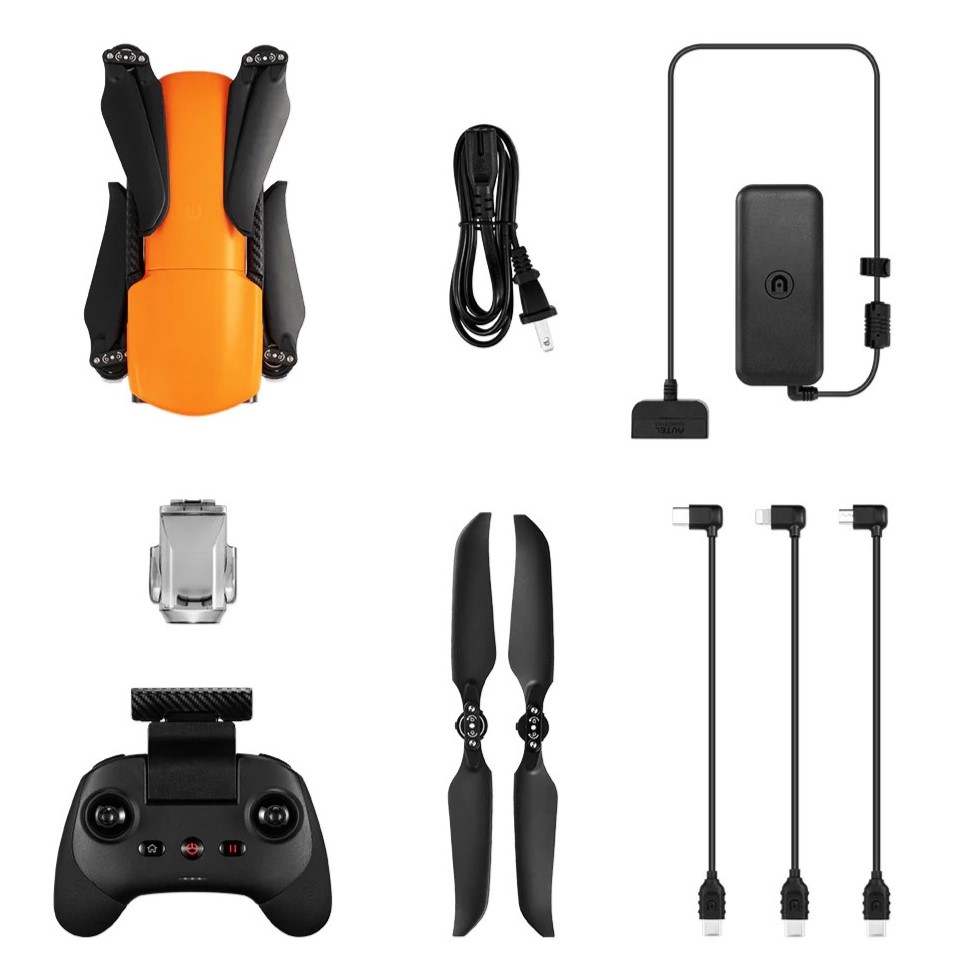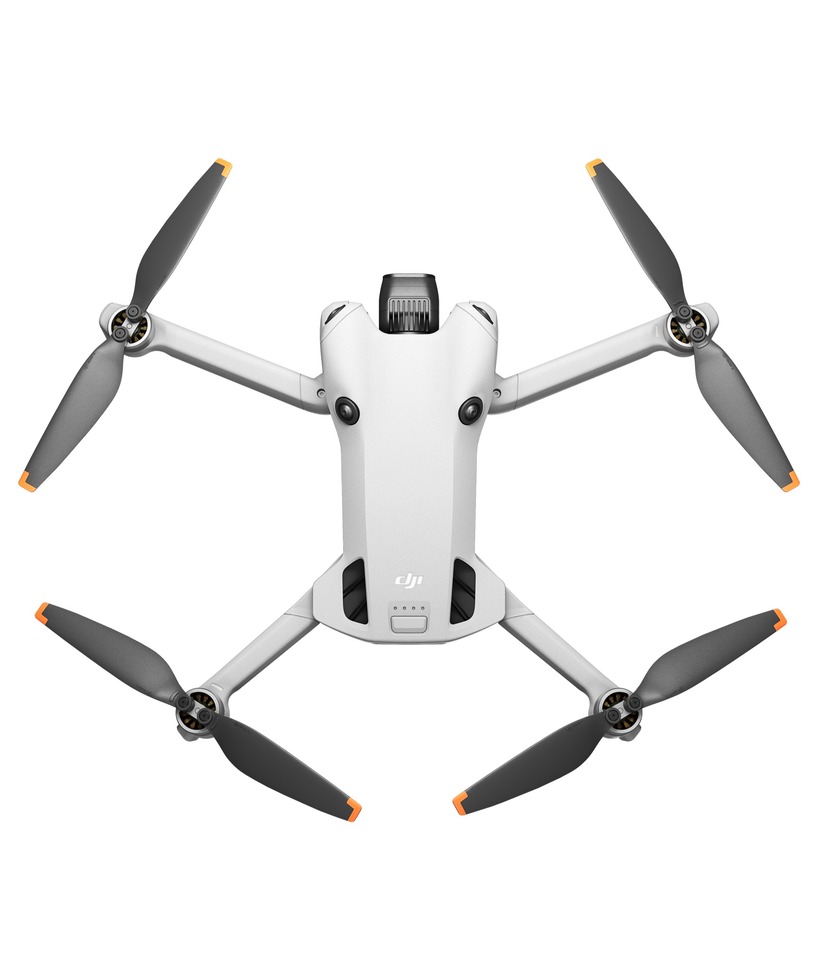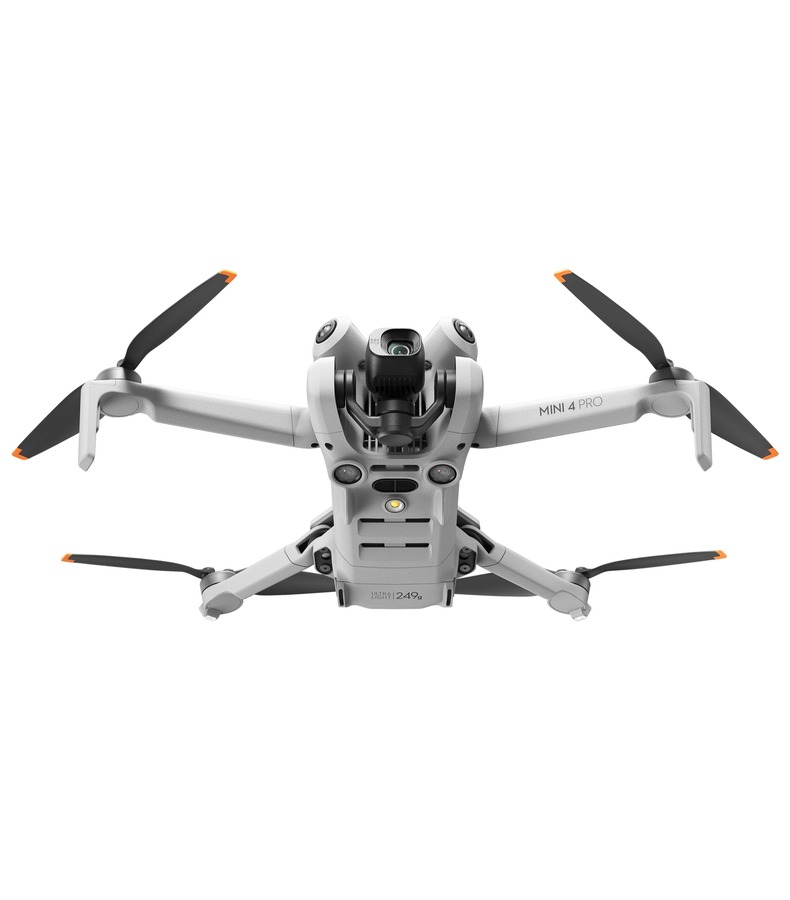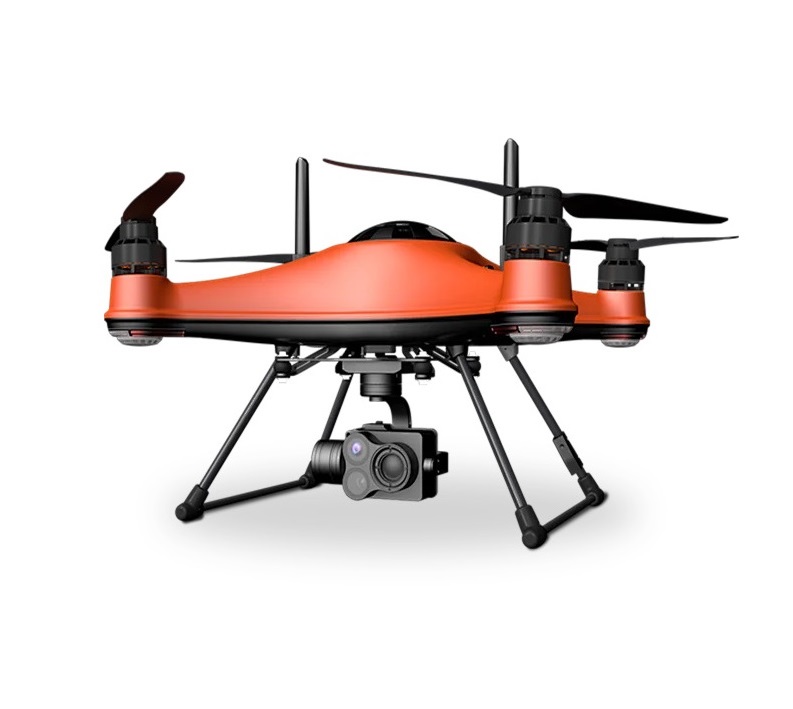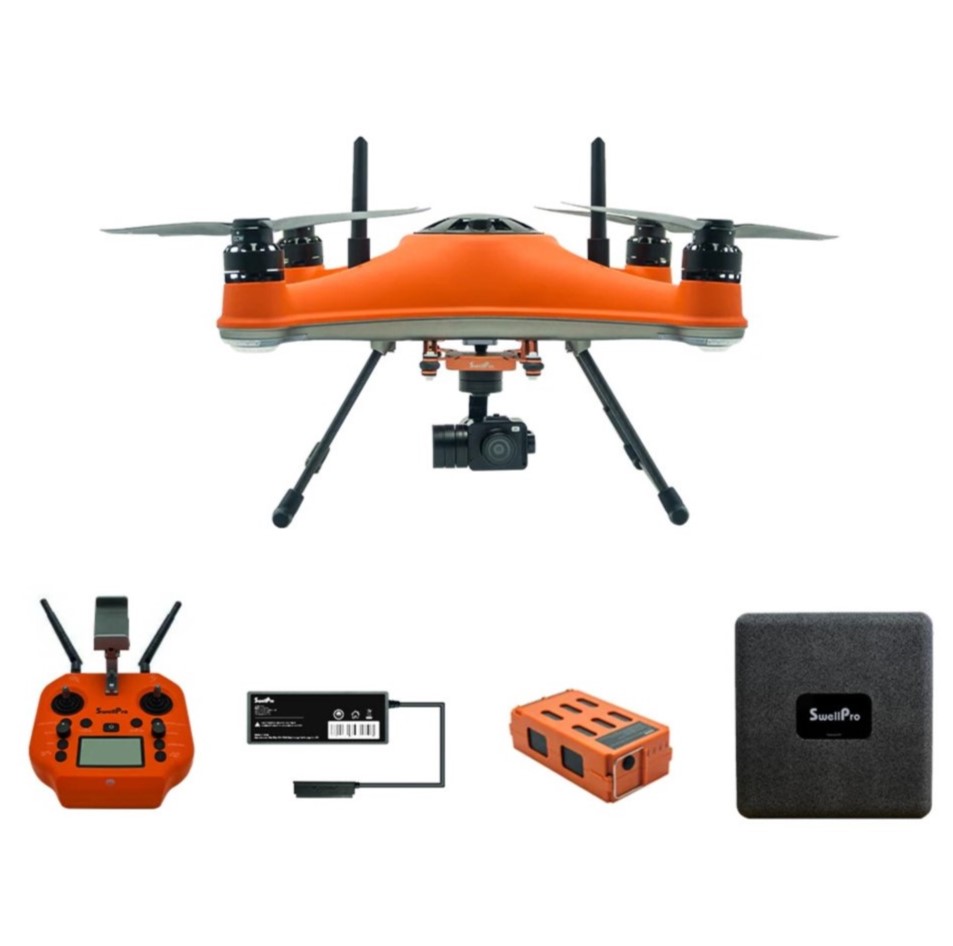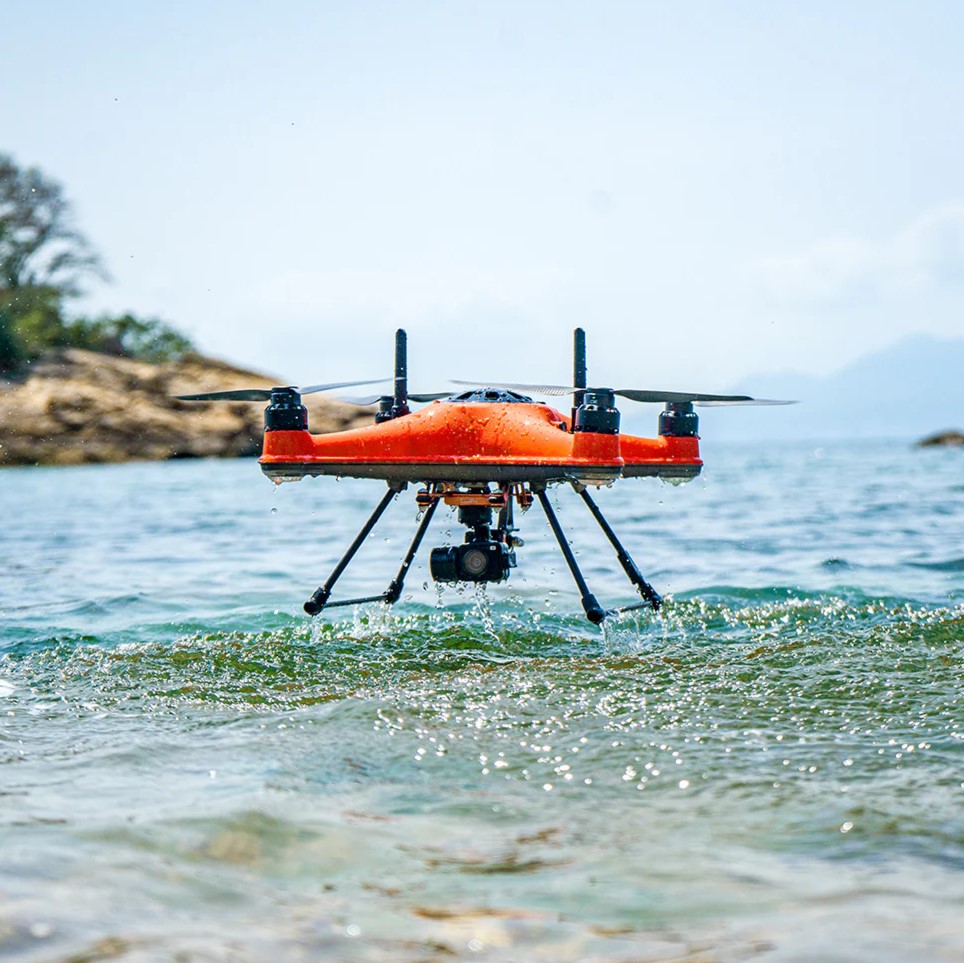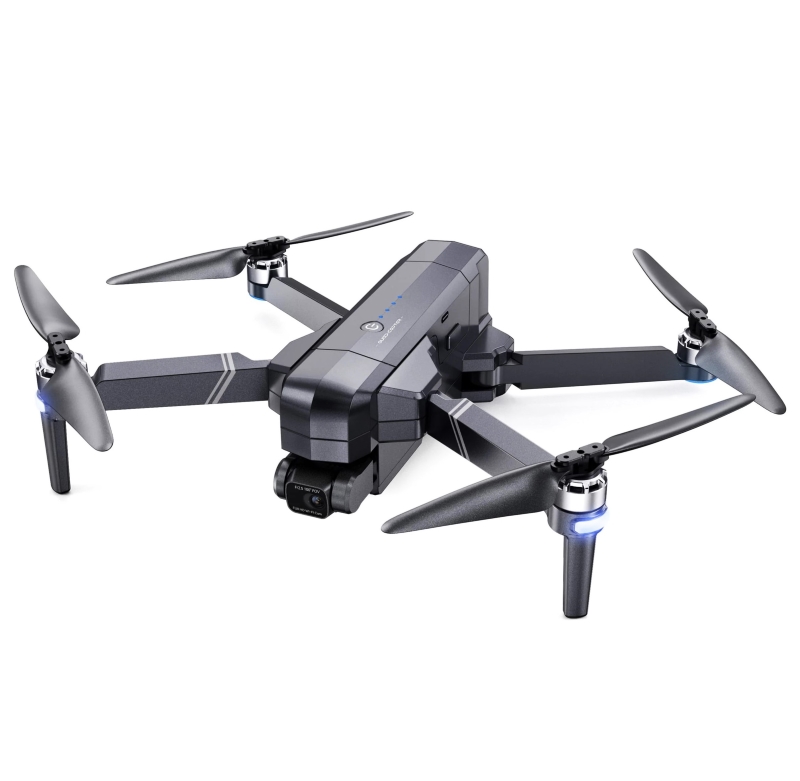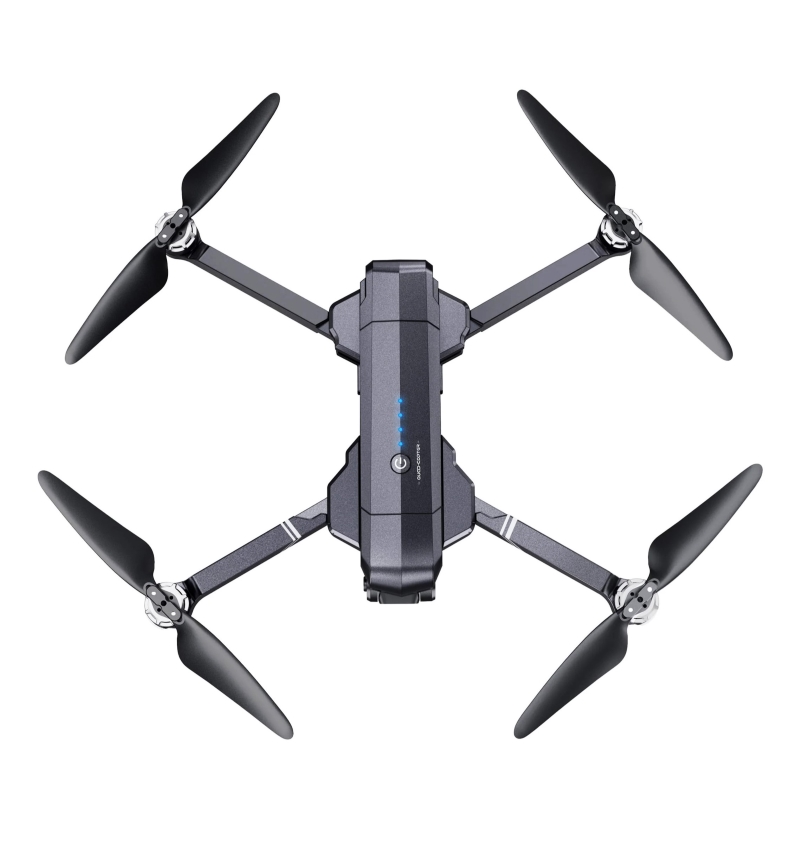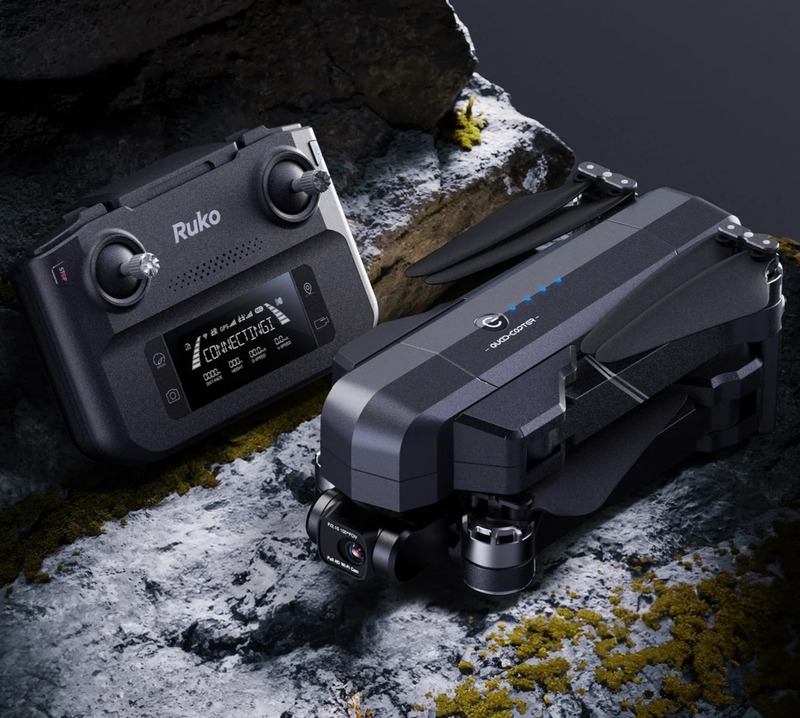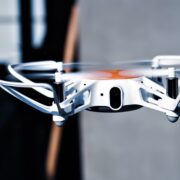Ever get the feeling you’re being followed?
When it comes to drones, that can be a good thing.
We’re not talking about a drone that picks through your garbage and waits for you outside where you work. Instead, we are talking about a drone that has the capability to stay locked on you and follow you wherever you go.
Think about it. If you’ve ever seen those amazing action shots of people jumping off cliffs, snowboarding down a mountain, paddle boarding across the ocean, kayaking, or doing other sporting activities, chances are good; this is how they got them.
Drones with a follow-me mode can automatically track a target and follow it as it moves. That means you can get on with doing whatever it is you’re doing without worrying about having to control your drone at the same time when it comes to getting the photos and videos you want.
![]()
Follow-me drones are also a game-changer for travel enthusiasts, allowing them to create cinematic travel vlogs and capture scenic beauty in a way that was once reserved for professionals. Whether hiking through lush forests, exploring bustling cities, or wandering along serene beaches, these drones provide an extra dimension to travel documentation, capturing spectacular scenery and intimate moments alike.
Filmmakers, too, are harnessing the potential of follow-me drones to elevate their storytelling. These drones open up new avenues for creative cinematography, enabling dynamic shots that were previously hard – or impossible – to achieve.
With the ability to maintain a steady tracking shot, filmmakers can now infuse their productions with a sense of motion and grandeur that was once the domain of expensive equipment and seasoned camera operators.
Instead of being creepy stalkers, drones that follow you are a key tool to get amazing footage, whether you’re recording an adventure holiday or making a full-blown movie.
So, how do you decide which follow-me drone will fit your needs? Well, that’s what we’re here for. We’ve put together a comprehensive list of the very best tracking drones out there. Read on to equip yourself with the knowledge needed to make an informed decision.
Here Are the Best Drones That Can Follow You – By Awards
Whether you’re an adventure seeker, a travel enthusiast, or a budding filmmaker, you can rest assured that we at Travel By Drone have a follow-me drone recommendation tailored to your specific requirements, backed by thorough and methodical testing.
- Editors Choice: DJI Mavic 3 Pro | Read Full Review
- Runner-up: Autel Evo II Pro V3 | Read Full Review
- Budget Pick: DJI Air 3 | Read Full Review
- Budget Pick (DJI Alternative): Autel Evo Lite Plus | Read Full Review
- Best For Travel Enthusiasts: DJI Mini 4 Pro | Read Full Review
- Best Waterproof Drone: SwellPro SplashDrone 4 Filming Edition | Read Full Review
- Cheapest Follow Me Drone: Ruko F11GIM2 Drone | Read Full Review
Best Follow Me Drones of 2024 – Our Experts’ Top Picks
Here is the list of top picks for best follow-me drones of 2024 by Travel By Drone – Happy Flying!
1. Editors Choice: DJI Mavic 3 Pro (Best for Capturing Sports & Action)
In the world of drones, the DJI Mavic 3 Pro stands out as a marvel of engineering and design, especially for those passionate about capturing sports and action from the skies.
This flagship model from DJI is not just a drone; it's a testament to how far drone technology has evolved, offering a blend of high-end features that make it our editor's choice.
At the heart of the DJI Mavic 3 Pro are its remarkable three cameras. The primary camera, a Hasselblad wide-angle with a 24mm lens, boasts an adjustable f/2.8-f/11 aperture and a 4/3-inch sensor size, the largest in its class. This camera captures stunning 20MP photos and videos at up to 5.1K at 50fps, ensuring crystal-clear imagery even in the most dynamic environments.
The 3x medium tele camera, utilizing a 1/1.3-inch sensor with a 70mm lens and a fixed f/2.8 aperture, is capable of capturing photos at 12/ 48 MP resolution. Whereas the 7x tele camera utilizes a 1/2-inch sensor, featuring a 166 mm lens with a fixed f/3.4 aperture, and can capture photos at a resolution of 12 megapixels.
These two cameras complement the primary camera, offering varied focal lengths and perspectives for every shooting scenario. On top of that, both of these telephoto cameras support output of 4K high-resolution videos at up to 60 fps.
The primary camera, with its wide-angle lens, is perfect for capturing epic landscape shots or recording action with the video setting. The medium tele camera lets you zoom in close to the action without losing image quality. Meanwhile, the main tele camera’s extreme zoom brings you straight into the action, allowing you to focus on a particular area or character so that you can capture every detail without endangering your drone by getting too close.
Plus, whether you are mountain biking through rugged terrain or skiing down the slopes, the Mavic 3 Pro FocusTrack technology offers advanced real-time tracking capabilities, ensuring to keep the subject locked in its frame the entire time thereby allowing you to capture stunning action footage with ease.
But we can’t talk about the Mavic 3 Pro tracking technology without mentioning its sophisticated obstacle detection and avoidance system, which ensures safe tracking. This system is crucial for shooting action sports, where the drone needs to follow the fast-moving subject while skillfully avoiding collisions with obstacles in challenging environments.
It consists of six fisheye and two wide-angle sensors, allowing the Mavic 3 Pro to sense obstacles in all directions. And once the obstacles are detected along its path, the Advanced Pilot Assistance System (APAS) 5.0 technology helps the drone to bypass them autonomously, ensuring safe and worry-free flights even in complex environments.
The Mavic 3 Pro is also loaded with other notable features. The GEO 2.0 geofencing ensures safe and compliant flying, while the Advanced Return to Home and AirSense ADS-B receivers enhance safety. For creative videography, there are Quickshots, Mastershots, Hyperlapse, Cruise Control, and Waypoint—all of which contribute to an exceptional flying experience.
In terms of flight performance, the Mavic 3 Pro excels, with an impressive flight time of approximately 43 minutes and a top speed of 47 mph. Weighing 958g, it strikes a balance between portability and performance.
However, excellence comes at a price. The Mavic 3 Pro is more expensive than other drones on the list. This might deter budget-conscious buyers, but for those who see drone photography and videography as more than just a leisure activity (professional photographers as well as serious sports & action enthusiasts), this drone is an unparalleled choice. If budget is a constraint, then our budget pick, the DJI Air 3, or a more regulator-friendly sub-250g drone like the DJI Mini 4 Pro might be alternatives, but for those where cost is no object, the Mavic 3 Pro is undoubtedly the best choice in the current market.Check Best PriceRead Customer Reviews
PROS
- One of the best consumer drones.
- Delivers top-tier performance.
- World’s first consumer drone to offer three cameras.
- Impressive flight and safety features.
- Primary camera features a four-thirds sensor size (the largest among drones on the market).
- Up to 5.1K/50fps video capturing capability in Normal or 10-bit D-Log M and HLG profiles.
- Smart shooting modes produce professional-looking footage with ease.
- FocusTrack technology to follow people or vehicles.
- Subject tracking even at 3x optical zoom.
- 360-degree obstacle avoidance technology.
- AirSense ADS-B receivers flash a warning on the controller whenever a manned aircraft is operating nearby for airspace awareness.
- Ideal choice for professional creators to supplement their work, such as commercials, documentaries, and films.
CONS
- Not everyone may find the need for all three cameras.
- The price point may be steep for beginners or those on a budget.
Final Verdict
The DJI Mavic 3 Pro is the undisputed champion for capturing sports and action moments. Its ease of use, comprehensive safety features, exceptional camera, and flight capabilities make it a top choice for both beginners and professionals serious about dynamic footage.
And yes, it’s pricey. But quality never comes cheap. If you are serious about a drone that is going to be able to perform the way you want in just about any circumstances, this is the one to go with.
2. Runner-up: Autel Evo II Pro V3
For those who want a high-quality wide-angle camera drone without the need for additional telephoto lenses, the Autel Evo II Pro V3 emerges as an exceptional choice, making it our runner-up.
This drone is a perfect alternative for those who find the triple-camera setup of the DJI Mavic 3 Pro too much for their needs. After all, if you don't plan on using the telephoto lenses of the Mavic 3 Pro, you can save yourself a substantial amount of money by opting for this drone instead.
The Evo II Pro V3 isn’t just about saving money; it’s about investing smartly in a drone that promises performance, reliability, and impressive imaging capabilities.
The camera of the Evo II Pro V3 is a testament to Autel’s commitment to quality. Equipped with Sony’s 1-inch CMOS sensor and a 29 mm equivalent focal length lens with an aperture range of f2.8 to f11, this drone captures stunning visuals. It boasts a video resolution of up to 6K at 30 FPS and a photo resolution of 20 megapixels, ensuring every shot is crisp and vibrant.
One of the standout features of the Evo II Pro V3 is its 360° obstacle detection system. This feature is crucial for safe navigation, particularly when following a subject or maneuvering in complex environments.
There are a total of 19 obstacle detection sensors spread across the drone’s body – including visual optical sensors, ultrasound sensors, and dual IMUs, ensuring it remains aware of its surroundings at all times and is set to fly autonomously around obstacles when they are detected along its path in real-time thereby significantly reducing the risk of crashes.
Other notable features of the Autel Evo II Pro V3 include Dynamic Track 2.1 for advanced subject tracking, ARH (Auto Return Home) for safe returns, and Moonlight Algorithm 2.0, enhancing low-light performance. The drone also offers a range of shooting modes, including Waypoint, Panorama, and Hyperlapse, catering to a wide spectrum of creative needs and preferences.
In terms of flight performance, the Evo II Pro V3 impresses with a flight time of approximately 40 minutes and a top speed of 45 mph, ensuring you capture the action without interruption. Weighing 1191 g, it strikes a balance between robustness and agility, making it a reliable companion for various aerial tasks.
However, it’s important to note that the EVO || Pro V3 has a slightly smaller 1-inch sensor compared to the 4/3-inch sensor of our editor’s choice, the DJI Mavic 3 Pro. This impacts its ability to compete with the Mavic 3 Pro in capturing exceptionally detailed action shots, but the Evo II Pro V3 still delivers breathtakingly good results that are perfect for professional usage. Plus, as we mentioned earlier, this drone only has one camera and lacks the telephoto lenses of the Mavic 3 Pro. If you only want to capture wide-angle shots, that’s not a problem, and it can save you a lot of money on telephoto lenses you don’t need. But if you want the versatility of zooming in on the action without losing image quality, this is not the drone for you.Despite this, the Evo II Pro V3 remains an excellent choice for those who value a balance between cost and high-end features. Its combination of advanced imaging capabilities, robust safety features, and user-friendly operations makes it a highly recommended option for both hobbyists and professionals seeking quality without the hefty price tag.
Check Best PriceRead Customer Reviews
PROS
- Professional-grade performance without breaking the bank.
- No geo-fencing (Make sure to fly legally abiding by the rules and regulations)
- Large 1-inch sensor size provides stunning photos and videos.
- Up to 6K/30fps video capturing capability, along with multiple shooting modes.
- 12-bit DNG format picture-taking capability offers greater post-production flexibility.
- Countless cutting-edge features.
- Dynamic Track 2.1 makes it ideal for capturing fast-paced action scenes accurately.
- 360° obstacle avoidance ensures your flights are free from collisions.
- Provided mission planners are an essential tool for anyone involved in photogrammetry.
CONS
- It may not deliver the same level of quality as our editor’s choice, the Mavic 3 Pro, which has a larger 4/3-inch sensor.
- It also falls slightly short in flight time compared to our top pick.
Final Verdict
The Autel Evo II Pro V3 provides an excellent alternative for enthusiasts looking for a well-priced drone with professional-grade performance to capture high-quality sports and action footage.
Plus, thanks to its lack of geofencing, it is an excellent choice if you want the freedom to fly anywhere.
3. Budget Pick: DJI Air 3
The DJI AIR 3 occupies a unique space in the world of drones.
It's a stepping stone between beginner-friendly models and professional-grade drones, offering an enticing blend of performance and convenience. This drone is a solid choice and could easily have been our top pick were it not for one important consideration (More on this later).
The DJI Air 3 boasts two cameras, offering versatility in aerial photography and videography. The wide-angle camera featuring a 1/1.3″ CMOS sensor with a 24 mm lens and a fixed aperture of F1.7 ensures broad, scenic captures.
Meanwhile, the telephoto camera utilizing the same sensor offers 3x optical zoom, allowing you to bring distant subjects closer for precise shots without compromising clarity. It has the equivalent of a 70 mm focal length lens and a fixed aperture of F2.8, which is quite impressive for a zoom lens.
Both cameras can capture photos at 12/ 48 megapixels resolution and support output of 4K high-resolution video at up to 60 FPS. Over and above that, with identical sensors, the DJI Air 3 provides consistent image quality across both cameras, making it easy to match footage from the two cameras while editing.
In addition, the Air 3 is the first drone in the Air series to offer a 2.7K vertical video shooting option, catering to the growing demand for social media content. However, it achieves this through in-camera cropping rather than a rotating camera mechanism, meaning you won’t be getting the same resolution as you would with a rotating camera of drones like DJI Mini 3 or Mini 4 Pro.
The key feature of the DJI Air 3 is its omnidirectional obstacle detection and avoidance system. This system, vital for safe navigation, utilizes a pair of fisheye lenses mounted to the front and back of the drone, along with binocular lenses and a 3D TOF positioned at the bottom to detect obstacles in all directions.
Once potential obstacles are detected along the drone’s path, its Advanced Pilot Assistance (APAS) 5.0 technology helps actively avoid collisions by automatically coming up with a new, better route in real time. This ensures the drone can continue tracking its subject without interruption, even through obstruction-rich environments.
The Air 3 also comes loaded with features like Return to Home for safety, the AirSense ADS-B receivers for airspace awareness, and FocusTrack for efficient subject tracking. It offers a variety of shooting modes, including QuickShots for automated flight patterns, Mastershots, Timelapse, Waypoint, and multiple photography modes. These features make the Air 3 versatile and user-friendly, suitable for a range of creative applications.
In terms of flight performance, the DJI Air 3 impresses with a maximum flight time of 46 minutes, a top speed of 47 mph, and a weight of just 720g. This makes it a highly portable and agile drone, ideal for extended use in various environments.
Moreover, the new and improved charging hub is another smart addition to the Air 3. It enables you to transfer the remaining power from two weaker batteries to the most charged with the press of a button. This smart function ensures you get the most flight time possible in a location with no charging facility available.
However, despite all that, the fixed aperture on both cameras of the Air 3 might be seen as a limitation. Because you won’t be able to adjust the aperture to let in less light in very bright conditions, resulting in overexposed footage with choppy motion that doesn’t look at all cinematic. To address this, users can opt for an ND filter, which reduces the total amount of light entering your camera. This helps the camera stick to a slower shutter speed and thus allows for smooth cinematic footage as per the 180-degree shutter rule on sunny days.For those looking for an even smaller and lighter drone, the sub-250g DJI Mini 4 Pro is an excellent alternative. It employs the same sensor in its single camera as the Air 3 and comes at a slightly lower price, offering an outstanding balance between size, performance, and cost.
Check Best PriceRead Customer Reviews
PROS
- Reasonably priced to cater to individuals on a budget.
- Countless cutting-edge flight and safety features.
- Dual camera setup offers more creative options.
- Up to 4K/60 fps video in 8-bit Standard or 10-bit D-Log M or 10-bit HLG color profile.
- Vertical shooting feature simplifies content creation for platforms like Instagram & TikTok.
- Intelligent flight modes provide professional-looking results with minimal effort.
- FocusTrack technology allows you to track and capture fast-moving subjects with unmatched precision & accuracy.
- Omnidirectional obstacle avoidance system mitigates the risk of collisions.
- AirSense ADS-B receivers provide notification of nearby planes and helicopters for safety.
- Impressive flight time of 46 minutes allows for more time in the air to capture breathtaking shots.
- Innovative charging hub ensures uninterrupted flight sessions even when away from power outlets.
CONS
- Fixed aperture on both cameras.
- It might not be the best choice for professional-level work due to the smaller sensor size.
Final Verdict
The DJI Air 3 presents an affordable entry point into the world of follow-me drones. It caters to budget-conscious users who want a taste of dynamic aerial shooting without breaking the bank.
Over and above that the issue of both cameras having a fixed aperture can easily be dealt with by the use of ND Filters when shooting in very bright lighting . However, it doesn’t compare to the better camera you’ll get on more expensive drones.
Is that a deal breaker? Well, that depends on you and your budget. Suppose you’re looking for an affordable drone that is still packed with advanced features typically found in higher-priced models. In that case, you may be able to overlook the limitations of the camera.
On the other hand, if you’re a pro who wants only the best or you’re looking to use your drone commercially, it might be better to up your budget and go for the very best.
4. Budget Pick (DJI Alternative): Autel Evo Lite Plus
The Autel Evo Lite+ is a commendable rival to DJI's budget pick, boasting camera capabilities that are jaw-dropping.
While it may not match the versatility of the DJI Air 3, the Evo Lite+ more than compensates with its advanced imaging prowess, making it a top choice for those prioritizing photographic quality over a breadth of features.
The camera of the Evo Lite Plus is where it truly shines. It features a larger 1-inch sensor and an equivalent focal length lens of 29 mm alongside an adjustable aperture range of f/2.8 – f/11, allowing for on-the-fly exposure adjustments without the need for landing and changing out neutral density filters.
The drone camera provides a photo resolution of 20 megapixels and can capture videos at various resolutions up to 6K at 30 FPS, accommodating a wide range of creative demands. Additionally, the Evo Lite+ offers the unique ‘SkyPortrait’ feature, allowing you to capture stunning group selfies (dronies) effortlessly with a touch of a button.
Dynamic Track 2.1, Autel’s subject-tracking technology, is another highlight of the Evo Lite+. It allows this drone to follow and film moving subjects with precision, making it ideal for recording sports and action footage with ease, where keeping the subject on the move in sharp focus is crucial.
The Evo Lite+ doesn’t stop at just excellent imaging and tracking capabilities. It includes other noteworthy features like the Moonlight Algorithm, which enhances low-light performance, and a Defog mode to ensure clarity in less-than-ideal conditions. Its different shooting modes, such as Hyperlapse and Panorama, along with fun flight patterns like Rocket, Fade Away, Orbit, and Flick, provide users with ample opportunities to take their storytelling game to new heights.
In terms of flight performance, the Evo Lite Plus delivers solidly with a flight time of 40 minutes, a maximum speed of 40 mph, and a weight of 835g. These specs make it a reliable and manageable drone for various outdoor scenarios, balancing endurance and agility.
Having said all that, a notable downside of the Evo Lite+ is its lack of a 360-degree obstacle avoidance system, a feature vital for follow-me drones used in action sports. The drone has forward, rearward, and downward sensors, but the absence of side and top sensors can make it challenging to fly in certain areas. This limitation makes the Evo Lite+ more suited to places that are quite open without any obstacles around.For those seeking a more affordable and lighter option with comprehensive obstacle avoidance, the 249g DJI Mini 4 Pro is an excellent alternative. Though it has a smaller sensor than the Evo Lite Plus, the Mini 4 Pro offers 360-degree collision avoidance, similar features, and functionality, making it a strong contender for those prioritizing safety and ease of use in their drone adventures.
Check Best PriceRead Customer Reviews
PROS
- An affordable option for hobbyists, enthusiasts, and professionals on a budget.
- Excellent flight & safety features, typically found in expensive models.
- Large 1-inch sensor size ensures crisper images alongside vibrant and lifelike videos.
- Capable of shooting high-end 6K/30 fps videos in Standard and Log color profiles.
- Adjustable aperture means here you won’t be as reliant on neutral density filters as you will be with the DJI Air 3.
- Autonomous flight modes let you produce professional-looking footage without advanced piloting skills.
- Dynamic track technology allows the drone to automatically follow and film moving subjects.
- No geo-fencing restrictions allow you to fly anywhere. However, make sure you fly responsibly.
- Impressive flight time of 40 minutes provides ample time to figure out that perfect shot.
CONS
- Obstacle avoidance is limited to forward, rearward, and downward directions.
- It’s not suitable for demanding or professional-level work.
Final Verdict
The Autel Evo Lite Plus is a worthy alternative to DJI’s budget pick. While it doesn’t carry the DJI name, it does deliver advanced features and functionality at a wallet-friendly price point. Especially the drone’s camera sensor size and photo and video quality are on par with budget expectations.
To put it simply, if you’re looking for a drone that won’t let you down when it comes to camera performance and also won’t break the bank, and you can handle the absence of 360° obstacle avoidance, this is one worth considering.
5. Best For Travel Enthusiasts: DJI Mini 4 Pro
The DJI Mini 4 Pro stands out as the best sub-250g drone currently available, exempt from FAA registration for recreational use and Remote ID compliance due to its lightweight design.
That weight class also makes it less subject to regulations in many regions around the world, as most countries classify drones based on their weight and have stricter rules for larger/ heavier drones.
In addition, with a size similar to a smartphone, the Mini 4 Pro not only easily fits in a carry-on bag but also allows ample space for all your travel essentials, minimizing the need for checked baggage.
All of these factors make it an ideal travel companion for frequent travelers looking to capture stunning aerial footage of their adventures without getting weighed down.
Perfect for beginners, adventurers, outdoor enthusiasts, and social media content creators, the Mini 4 Pro packs a punch in a compact size.
At the core of the Mini 4 Pro is its impressive camera, equipped with a 1/1.3-inch Quad Bayer CMOS image sensor that ensures high-quality imaging. The camera features a 24mm focal length lens with a fixed F1.7 aperture, which makes it excel in low-light conditions and pick up exquisite detail even during twilight. It is capable of capturing photos at 12/ 48 MP resolution, whereas videos can be shot at up to 4K at 60 fps.
Notably, this drone also has a 4K Vertical filming option, which is ideal for social media platforms like TikTok, Instagram Reels, and YouTube Shorts. To film vertically, you can simply press a button to rotate the camera 90 degrees to provide true 4 K vertical footage without resolution loss—a significant advantage over the cropping method used in the Air 3.
Besides, the Mini 4 Pro is equipped with a full 360-degree obstacle sensing and avoidance system, making it exceptionally safe and reliable for various shooting scenarios.
This system utilizes four fisheye vision sensors on the top, downward binocular vision sensors, and a 3D ToF sensor to detect obstacles in every direction. And once the potential obstacles are detected, the Advanced Autopilot Assist System (APAS) 6.0 technology automatically makes adjustments to the drone’s flight path to avoid collision while keeping it on its current trajectory thereby allowing for worry-free flights even through complex environments.
DJI Mini 4 Pro also comes equipped with advanced features like FocusTrack for effective subject tracking, Return-to-Home for safety, Quickshots, Mastershots, Hyperlapse, Waypoint, and Panorama. These features enhance the drone’s versatility, making it capable of capturing creative and cinematic footage with ease.
In terms of flight performance, the Mini 4 Pro offers impressive agility and a top speed of 35 mph, making it a joy to fly.
But, it does have a lower flight time of 34 minutes compared to some larger drones. Although this is common for drones in this weight class, DJI also offers a plus battery option, which allows for extended flight times of up to 45 minutes and is available at an additional cost. However, being heavier, this battery pack takes the drone weight past the FAA’s 250-gram limit, which means you will need to register it if you’re flying in the United States. While the Mini 4 Pro’s camera performance is commendable, it may not entirely match the quality of higher-end models with larger sensors like the DJI Mavic 3 Pro, Autel Evo II Pro V3, or Autel Evo Lite Plus. These models offer sharper, more detailed footage, despite having fewer pixels than the Mini 4 Pro’s 48MP Quad Bayer camera.However, for its size and weight class, the Mini 4 Pro strikes an excellent balance between portability, functionality, and image quality, making it a top choice for those seeking a compact, feature-rich drone.
Check Best PriceRead Customer Reviews
PROS
- The best sub-250g drone currently available on the market.
- Exempt from numerous regulations worldwide due to its light weight.
- Compact and foldable design for easy storage and transport.
- Numerous advanced flight and safety features.
- Up to 4K/100 fps video capturing capability in SDR, HLG, or D-Log M color profile.
- The camera flips 90 degrees to shoot in vertical mode, eliminating the need to crop horizontal footage into a vertical format for social media, thereby saving time and maintaining the full 4K video resolution.
- Automated flight modes make it easier to capture professional-looking footage.
- FocusTrack technology allows the drone to automatically follow and film moving subjects.
- 360-degree obstacle avoidance provides a safer flying experience.
CONS
- Its camera has a smaller sensor, meaning it will not deliver the same level of detail and dynamic range as higher-end drones with larger sensors.
- It also has the lowest flight time of any of the DJI drones on this list, partly as a result of its smaller and more portable size.
Final Verdict
The DJI Mini 4 pro is a great choice for travel influencers, photography and videography enthusiasts, and those who want a reliable drone with a balance of features and cost.
The lightweight build and small size often exempt this little machine from many aviation regulations that heavier drones would have to abide by around the world. That means flying it internationally or in countries with strict drone laws is easier without having to jump through special permission loopholes, making it a perfect travel companion for documenting your on-the-go adventures with ease.
6. Best Waterproof Drone: SwellPro SplashDrone 4 Filming Edition
The SwellPro SplashDrone 4 is a dream come true for adventurers looking to capture their water escapades. Uniquely designed for use in, on, and around water, this drone is perfect for filming water sports like kayaking, paddleboarding, jet skiing, and kiteboarding.
Its capability to operate in extreme weather conditions and wet environments allows users to capture shots that would be impossible for most other drones, making it a standout choice for aquatic cinematography.
The SplashDrone 4’s waterproofing is a game-changer. Its IP67 rating means it can withstand immersion in water depths of 150 mm-1000 mm for up to 30 minutes.
The waterproof camera of this drone is specifically designed for aerial photography and videography around water and even works marvelously underwater. It features a 1/2.3″ sensor size with an aperture of f/2.65 and a 92.6° field of view. Capable of capturing up to 4K resolution videos at 30 FPS and 12-megapixel photos in both JPEG and DNG formats, it ensures high-quality imaging in aquatic environments.
Remarkably, it can also float on water, allowing takeoffs and landings directly on the water surface. In case of capsizing due to waves, the Power-flip feature quickly rights the drone. The Boat Mode is another innovative feature, enabling the drone to sail on water surfaces and film stunning underwater footage. Additionally, the controller is IP66-rated, ensuring protection against splashing or dripping water and enhancing its usability in wet conditions.
Over and above that, SwellPro has equipped the SplashDrone 4 with an array of intelligent features. The Intelligent Follow Me Mode allows the drone to track the remote controller’s GPS position from various angles, including the front, side, and back, perfect for dynamic tracking shots. The Dynamic Return to Pilot ensures the drone returns safely to its operator, while Cruise Mode and Smooth+ Mode enable capturing cinematic footage effortlessly.
The drone’s flight performance is impressive. It comes with a 6600mAh battery, allowing up to 30 minutes of flight time. Weighing 2.18 kg, it achieves a top speed of 49 mph, a range of 3.0 miles, and can resist winds up to 31 mph. These specs make it robust and reliable in diverse and challenging conditions.
However, the SplashDrone 4 has its limitations. Its non-foldable design might pose challenges in terms of portability, but this is a small trade-off for its unparalleled water-based capabilities. Another notable absence is obstacle detection sensors. While this increases the risk of collisions on land, in aquatic environments, where there are fewer obstacles, this is less of a concern. The drone’s reliance on GPS tracking for the follow-me mode means that the controller needs to be with the person being tracked, limiting its use for third-person tracking.Despite these shortcomings, for those focused on aquatic filming and extreme weather conditions, the SplashDrone 4 offers capabilities that are unmatched, making it a worthy investment for specific use cases.
Check Best PriceRead Customer Reviews
PROS
- Designed to handle harsh weather conditions and allows capturing footage that other drones wouldn’t dare approach.
- Resistant to both water and saltwater, meaning it’s ready for any aquatic adventure.
- It can float in water and flip itself if turned over – useful in rough waters.
- Cutting-edge flight and safety features make it easy to handle, even for beginners.
- 4K waterproof camera lets you capture stunning photos and videos, even underwater.
- Multiple advanced flight modes allow users to execute professional-looking shots with ease.
- With Follow Me tech, the drone can follow and film you like your personal paparazzi in the sky.
- It can handle winds up to 38 mph, so it won’t fly off like a balloon on a breezy day.
CONS
- Non-foldable, making it more difficult to transport.
- Obstacle detection system is absent, but it’s understandable given its waterproof focus.
- Uses only GPS tracking for follow-me mode, so it follows the controller that you’ll have to hold onto.
Final Verdict
The SwellPro SplashDrone 4 is the undisputed choice for water enthusiasts and adventurers. Its waterproof design and camera capabilities make it the perfect tool for capturing aquatic adventures.
7. Cheapest Follow Me Drone: Ruko F11GIM2
The Ruko F11GIM2 drone is a beacon of affordability in the drone market, offering a cost-effective way for enthusiasts to explore follow-me technology without breaking the bank.
It's an excellent option for those on a tight budget, providing an accessible entry point into the world of aerial photography and videography.
The F11GIM2 stands as a testament to the fact that you don’t have to spend a fortune to get a taste of what drones can offer.
The camera of the F11GIM2 is suitable for those who need a basic tool to capture simple aerial photos and videos. With the ability to shoot up to 4K resolution, it offers decent quality for personal use. While it may not meet the high standards required by professional photographers and videographers, the camera’s capabilities are more than sufficient for casual users, especially considering the drone’s price point.
The F11GIM2 boasts several features typically found in more expensive drones, such as Return to Home, GPS Positioning, Follow Me Mode for subject tracking, Gesture Shoot, Circle Fly (where the drone orbits the subject), and Waypoints.
During testing, it’s evident that these features, while present, don’t perform with the same finesse as higher-end models. However, when it comes to entry-level users, they provide a satisfactory experience, and the drone’s affordability justifies the slightly lower performance levels of these features.
In terms of flight performance, the Ruko F11GIM2 flies well overall. It weighs 560 grams and can resist winds up to 25 mph, making it fairly sturdy for different conditions. The drone offers around 22-25 minutes of flight time under real-world conditions, which is decent for its class. With a range of 1.8 miles and a top speed of 22 mph, it provides ample opportunity for users to explore and capture from the skies.
The drone comes well-equipped in a package with a controller, battery, and typically all the necessary accessories to get started. This makes the F11GIM2 an even more attractive option for beginners or those looking for a complete set without additional purchases.
However, there are some drawbacks. The F11GIM2 lacks obstacle detection sensors, a crucial feature for follow-me drones to avoid collisions with stationary objects. Users are advised to fly in open spaces and remain vigilant to ensure safety when using the follow-me mode. Additionally, the drone relies solely on GPS tracking for its follow-me mode, meaning the controller needs to be with the person who wants to get tracked, limiting the ability to track a third person independently.Despite these shortcomings, the Ruko F11GIM2 offers a solid introduction to drone flying and photography, especially for those mindful of their budget. Its combination of features and performance, relative to its cost, makes it a worthwhile consideration for newcomers to drone technology.
Check Best PriceRead Customer Reviews
PROS
- Adequate for casual users and beginners.
- Extremely budget-friendly for those on a tight budget.
- Easy to fly with intuitive controls, even your grandma could give it a go.
- Despite not being a high-end drone, it offers numerous advanced flight & safety features.
- Provides a cost-effective gateway to explore follow-me technology.
- With Follow Me mode, it can track and film your every move like your personal sky photographer.
- Advanced flight modes allow you to capture stunning shots with minimal effort.
- Comes with a padded carrying case, making it easy to take on your adventures.
CONS
- No obstacle detection system. However, it’s a tremendous bargain. Just be careful, and this economy drone can perform surprisingly well.
- Utilizes only GPS tracking technology for the follow me mode, meaning the drone can only follow you if you’re holding the controller.
Final Verdict
The Ruko F11GIM2 Drone is the ideal starting point for those looking to explore the world of follow-me drones without a significant investment.
You don’t expect Lamborghini performance from a Honda, and by the same token, you shouldn’t expect this drone to outperform others that cost ten times as much.
But this drone makes our list because, for what it costs, it packs a lot of handy features into an affordable package.
Why Should You Trust Us?
![]()
Trust us; we’re some guys on the Internet.
But seriously, trust is the cornerstone of our commitment to providing you with well-informed, reliable insights.
Our research team, led by dedicated professionals Allison Ross and Matthew Harris, takes pride in its thorough and meticulous process to ensure that the information we deliver is both credible and dependable.
We hate to burst the bubble here, but not everyone on the Internet is being completely honest with you. That’s why trust is so important: so that you can evaluate all the information you need before making a major purchase decision, like buying a drone with follow-me mode.
So, if it may sound like we’re bragging about all the research we did—well, you’re right. But we also want to show you why we came to the conclusions we did so that you can make your own decision.
Unlike the drones we evaluated, we’re not asking you to follow us without thinking about it first.
-
Research Process
Our journey to uncover the best drones to follow you for capturing dynamic footage was rigorous, spanning three weeks of relentless dedication. We left no stone unturned (or unfollowed), conducting extensive research through a multitude of channels and engaging with the drone community in various capacities.
Our team of experts scoured through articles on drones with follow-me mode, combed forums like Reddit and Quora, and engaged in meaningful conversations with seasoned drone pilots. We also delved deep into the vast ocean of consumer reviews on trusted platforms like Amazon and B&H Photo Video.
This detailed approach allowed us to learn from drone enthusiasts and experts. So you can be confident that our picks are based on real-world experience.
-
Shortlisting Process
We scrutinized critical factors such as follow-me technology, number of obstacle detection sensors, tracking speed, camera capabilities, stability, flight time, and available tracking modes.
We wanted to curate a list of follow-me drones that excel in these fundamental areas, thereby ensuring that our recommendations would cater to the diverse needs of our readers.
From the piles of data at our disposal, we shortlisted 18 drones, hailing from 9 different manufacturers. These drones emerged as the cream of the crop, setting high standards in the field of aerial photography and videography.
-
Testing Process
Ever had one of those jobs where you can’t believe you’re getting paid to do it? This was one of those.
Because this time, instead of doing the not-always-thrilling grunt work of reading forum posts, including endless pictures of strangers’ cats, we took our selected drones out into the field and actually played with them.
Yes, you heard it right. To gauge their tracking capabilities, we purchased each of the shortlisted drones and put them through a series of trials.
The testing process was designed to evaluate their ability to accurately track subjects while accommodating diverse activities and environments. After all, there’s not much point in buying a follow-me drone that can’t tell you from a dog running past in the background or a tree swaying in the breeze.
We began by walking and jogging in a spacious, open area, observing how well these drones kept us (the subject) in frame at all times. This served as the baseline for tracking precision.
Next, we escalated the difficulty level by taking to the dense forests on a motorbike, evaluating how effectively the drones kept up with the varying speeds of the bike and how well their obstacle avoidance systems navigated the intricate web of trees, branches, and obstacles along the way.
For those with a penchant for adventure sports, we also put these drones to the test during activities such as snowboarding, surfing, and kayaking, bringing in a whole new dimension of challenges.
These tests served to scrutinize their adaptability, robustness, and agility in the face of extreme outdoor pursuits.
The end result of this extensive testing process led us to the final selection of seven remarkable drones, each excelling in its own right. These drones were chosen based on their exceptional performance in numerous scenarios, making them perfectly suited to cater to the diverse needs of our readers.
In this article, we have presented an in-depth analysis of these selected drones, highlighting their strengths and revealing the ideal situations in which they truly shine.
What Is Follow-Me Mode on a Drone?
![]()
In the last few years, drone technology has evolved at a breakneck pace, opening up a dazzling array of features and functionalities. And one feature that has taken the spotlight, revolutionizing the way we capture dynamic footage, is “follow-me” mode.
This extraordinary capability empowers drones to autonomously track and follow a subject, be it a person, a vehicle, or any other moving object. Ensuring the chosen subject remains at the center of attention as the drone records its every move.
But how does this wizardry work, and what makes it possible for drones to follow you seamlessly? Let’s delve into the intricacies of follow-me mode, the underlying technology, and how it has become an essential feature in the realm of aerial videography.
The Tech Behind Follow-Me Mode
In order to achieve this autonomous subject tracking, drones leverage two cutting-edge technologies:
- GPS (Global Positioning System) Technology.
- Vision Recognition Technology.
Although they both allow the drone to autonomously follow a subject, these technologies do it in very different ways. Each has its own purpose, strengths, and weaknesses, so let’s explore them in detail.
-
GPS Technology
GPS, the Global Positioning System, is a well-known satellite-based navigation system that helps drones pinpoint their location with remarkable accuracy. By receiving signals from multiple satellites in the Earth’s orbit, a drone can calculate its exact position in three-dimensional space, down to a few meters.
In GPS-based follow-me mode, the drone uses your GPS-enabled device (such as a smartphone or a dedicated remote control) to establish its initial reference point, essentially determining where you are. It then utilizes the GPS data to create a virtual “follow path.” The drone constantly updates its position relative to your location, adjusting its flight to ensure you remain within the frame.
This technology is incredibly reliable but is well suited for open environments because it has limitations when tracking in challenging conditions like dense forests because GPS satellite signals can be obstructed. Also, drones relying on GPS technology as the only tracking method generally do not have any collision avoidance system.
Over and above that, remember that a drone with a GPS-based follow me feature doesn’t track you, but the remote control (or another GPS-enabled device being used to control the drone, such as a cell phone.)
For most uses, that’s fine, but it means you’ll need to hold the controller if you want the drone to follow you. You can’t use it to track the movements of something else, like animals and vehicles, for example.
-
Vision Recognition Technology
Vision Recognition technology, on the other hand, relies on the drone’s built-in sensors and cameras to track a subject. In other words, your drone can see you!
Drones equipped with this technology mainly utilize a combination of visual and sound data and other advanced algorithms to employ object recognition to identify and lock onto a subject based on its visual appearance, tracking it as it moves.
This method of autonomous tracking excels in environments where GPS signals might be weak or obstructed and in complex and obstacle-laden settings because, here, the drone operates independently of external satellites, and obstacle avoidance is a feature.
Importantly, unlike GPS-based follow-me technology, the drone doesn’t track a remote control or other GPS-enabled device here. Instead, it uses visual technology to track any person or object you want.
That makes this a much more useful technology for tracking a third person, such as your friends, vehicles, or anything else you want to follow.
However, it, too, has limitations when it comes to tracking low-light conditions or when the subject is too small.
- The Power of Fusion
These days, the most advanced drone companies like DJI and Autel have taken a hybrid approach, combining both GPS and Vision Recognition technologies in a drone to offer a comprehensive follow-me mode. This fusion of capabilities provides a significant advantage over using just one method.
By using both GPS and vision recognition, these drones deliver highly accurate tracking in open environments while seamlessly transitioning to vision-based tracking when GPS-based technology is not sufficient and vice-versa. This not only makes tracking more precise but also minimizes the risk of losing the subject.
On top of that, most advanced follow-me drones come equipped with obstacle avoidance systems. These systems use a combination of sensors, including, but not limited to, vision, ultrasonic, and LiDAR, to help drones detect and navigate around obstacles in their path.
Safety is paramount, and these systems help prevent collisions with trees, buildings, and other hazards, which is especially helpful when tracking.
- Customization: Height, Angle, and Distance
To make the follow-me mode more versatile and adaptable, many advanced drones also let you customize the drone’s position in relation to the subject.
You can adjust the height, angle, and distance at which the drone follows you, allowing for creative control over the shots you capture. This level of customization ensures that you can achieve the perfect angle and perspective for your footage.
Basically, follow-me mode on drones has transformed the way we document our adventures, whether it’s action sports, travel, or creative filmmaking. The combination of GPS and Vision Recognition technologies, along with obstacle avoidance systems, offers a reliable and safe tracking experience.
By embracing the fusion of these technologies, drones have become versatile, being able to adapt to various tracking scenarios. The ability to customize the drone’s position in relation to the subject provides creative flexibility, enabling you to capture stunning, dynamic footage like never before.
As drone technology continues to advance, we can expect even more exciting developments in follow-me mode, enriching our aerial videography experiences.
Finding the Best Drone That Follows You: Factors to Consider
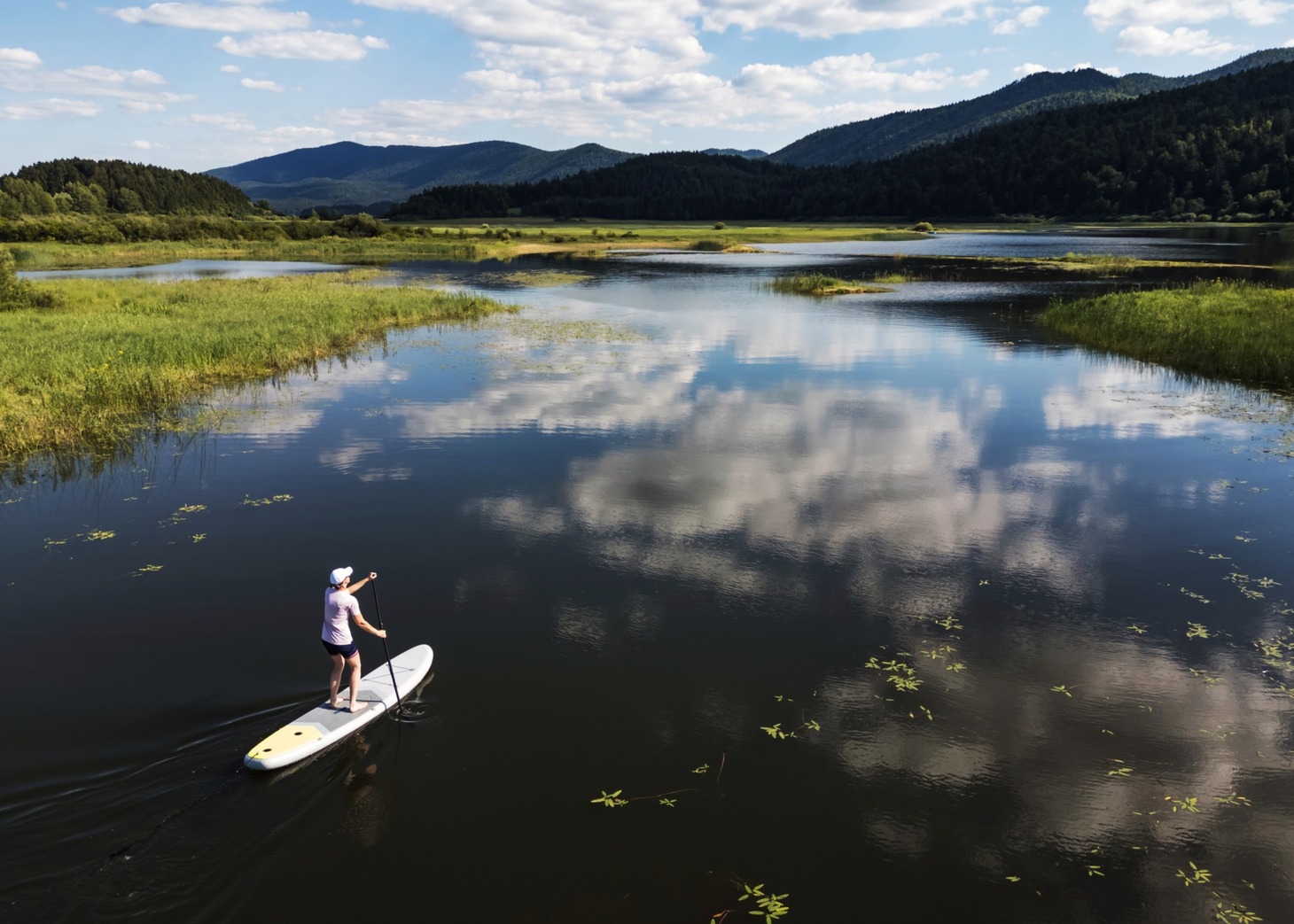
Hopefully, our drone’s reviews have helped, but maybe you’re still not sure what exactly you should be looking for.
So, for the best tracking experience, these are some of the factors that you may want to consider when it comes to making a purchase decision for the drone that follows you:
-
Budget
Budget is a critical factor when considering the purchase of a tracking drone.
Self-following drones come in a wide range of price points, so it’s essential to determine how much you’re willing to invest. A higher budget often unlocks more advanced features, better camera quality, and enhanced performance.
Over and above that, there are also budget-friendly options available that provide an entry point into the world of follow-me drones without breaking the bank. Still, in many ways, you get what you pay for.
Cheaper drones tend not to be great at capturing fast-moving sports and activities because they aren’t capable of following quick or unpredictable movements perfectly due to the lack of advanced parts and technology.
Plus, you’ll need to fly carefully because many cheaper drones cut costs by excluding vital features like Obstacle Avoidance.
-
Manufacturer
Price is important, but we don’t recommend buying drones from the dollar store.
The manufacturer of the drone can significantly impact your overall experience. And that’s why when purchasing a drone, it’s advisable to choose a manufacturer known for robustness and reliability with a proven track record of producing high-quality drones such as DJI and Autel.
The company’s reputation can give you peace of mind, knowing that you are investing in a product that has undergone rigorous testing and quality control.
-
Technology
Most follow-me drones generally utilize either GPS or Vision Recognition technology for tracking subjects.
However, we only recommend opting for drones that incorporate both of these technologies, like those from leading manufacturers such as DJI and Autel.
A hybrid approach that combines both technologies ensures that you can track subjects seamlessly, regardless of the environment, making it a crucial factor to consider.
-
Obstacle Avoidance
Even a relatively cheap drone is going to cost you hundreds of dollars. So there’s nothing funny about watching it smack into a telephone wire, a tree branch, or a passing eagle.
Safety is paramount, especially when using autonomous flying modes such as follow-me, so choosing drones equipped with omnidirectional or, at the least, tri-directional obstacle sensing and avoidance systems is advisable.
This will help to keep your aircraft away from any trees that try to suddenly jump out on it – or any local wildlife that thinks your drone might make for a tasty snack.
-
Speed
Like Maverick in Top Gun, you may have a need for speed. And the top speed of the drone with follow-me mode is an important consideration, especially for capturing fast-moving subjects.
Drones with higher speeds can keep up with subjects like athletes, vehicles, or wildlife more effectively. When tracking subjects in action sports or high-speed activities, a drone with a faster maximum speed can provide smoother and more dynamic footage.
Consider the drone’s top speed in relation to the subjects you intend to track.
-
Camera
The camera quality is a crucial factor when purchasing a drone to follow you.
Pay special attention to drone camera sensor size (the bigger, the better) and features like 4K photo and video recording, optical zoom, and a range of shooting modes.
The camera’s capabilities will directly impact the quality of the footage you capture, so investing in a drone with an excellent camera is often worthwhile.
We are familiar with the fact that learning about cameras is an entire subject in itself. But, we recommend taking a moment to think about the kind of footage you want to capture, then doing your research to determine what the best camera to achieve that will be.
-
Stabilization
I think we’ve all seen enough blurry photos of Bigfoot to know how important it is to get clear and crisp images and videos.
Advanced stabilization features, including a three-axis gimbal, electronic image stabilizers, advanced flight control system, and other onboard sensors, ensure the drone and camera remain steady, even in challenging flying conditions.
This is particularly important when shooting footage in windy conditions or when capturing the subject’s rapid movements.
-
Flight Time
The drone’s flight time, or the duration it can remain in the air on a single battery charge, is another key factor.
Longer flight times allow for extended tracking sessions and more opportunities to capture the perfect shot.
Consider your intended use and how often you’ll have access to charging facilities when evaluating the drone’s flight time.
Remember, drones with shorter flight times may cost you the perfect shot!
-
Range
The range of a drone is important, but it may not be a significant consideration for those using the drone primarily for self-tracking.
Range becomes crucial if you plan to track someone else, such as a friend skateboarding, surfing, or participating in other activities while holding the controller yourself.
In such cases, an extended range provides more flexibility for tracking subjects over greater distances (the longer the range, the better).
But if you’re a solo adventurer and only plan to record yourself, you don’t need to worry about your drone’s range, as it’s going to stick to you like glue most of the time.
-
Combo Deals
Opting for combo deals when purchasing a drone that can follow you is a wise decision for the long run.
These bundled packages provide significant cost savings upfront and prevent the need to purchase essential accessories individually later on, which can prove to be considerably more expensive.
Combo deals often include items like spare batteries, additional propellers, carrying cases, and other valuable accessories that enhance your overall flying experience.
By choosing these comprehensive packages, you not only save money but also ensure you have everything you need to enjoy your drone to the fullest, making it a smart and economical choice for enthusiasts and professionals alike.
-
Warranty
Lastly, the warranty offered by the manufacturer is an important consideration, as this ensures that you have a safety net should any problems arise during your drone’s lifespan.
A solid warranty provides peace of mind and protection in case of unexpected issues with your drone.
It’s advisable to consider the length and terms of the warranty, as well as the availability of customer support and service centers.
Conclusion
Now that you’ve read this article, you’re pretty close to being a drone expert yourself.
Understanding your needs is the key to making the right decision on a follow-me drone. Think about what you will be using your drone for, and then look at the features and details we have provided to help you make your choice.
There’s no point paying extra for features you aren’t going to use. On the other hand, having the right features can make all the difference between having a flying machine that frustrates you and one that you love.
The great thing about the popularity of drones is that you can find one to suit just about any need. If you just want something cheap and easy to use so you can get out there and explore a new hobby, there are some great drones available, even for limited budgets.
If, on the other hand, you are a serious drone enthusiast or intend to use the drone commercially, there are some incredible options that can capture amazing images and video footage and are an absolute joy to fly.
Just think carefully and make the best choice for yourself.
Happy flying!

